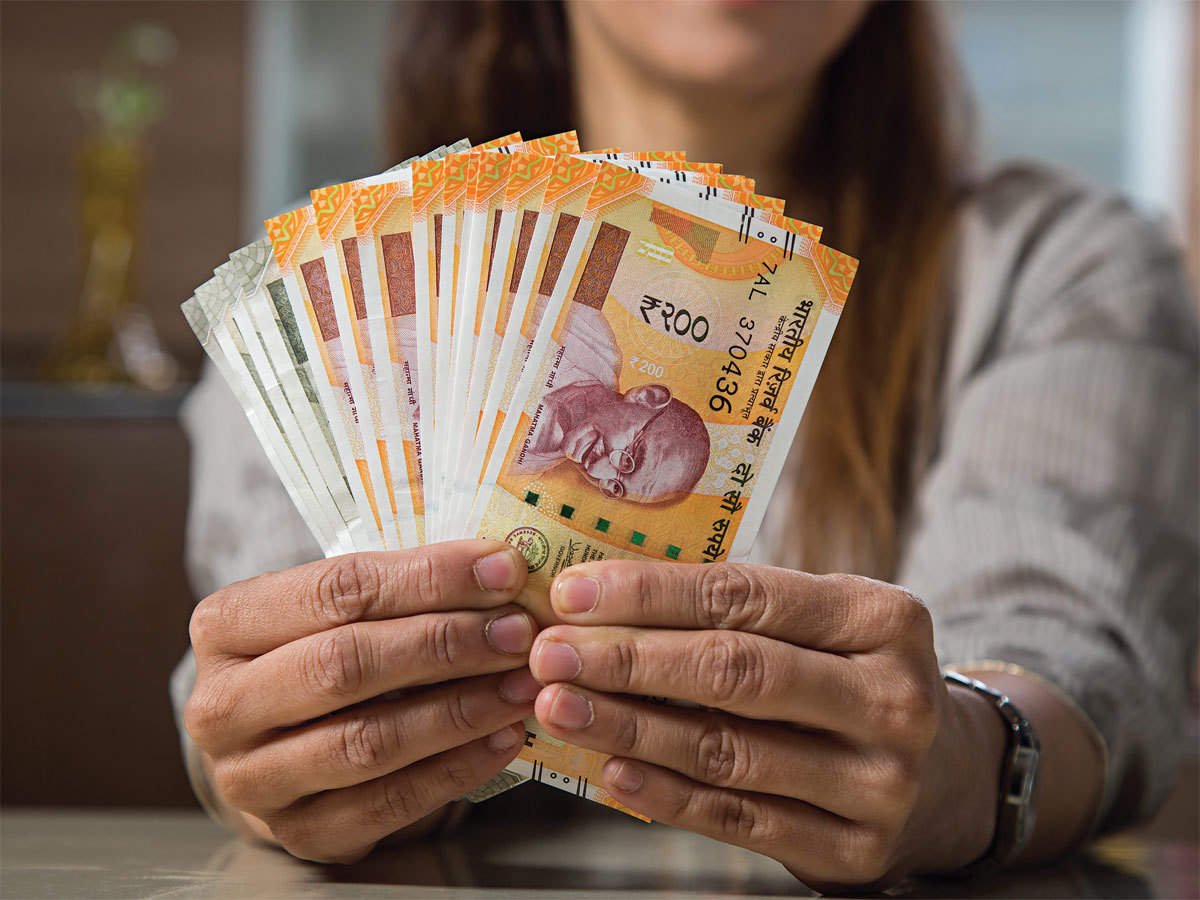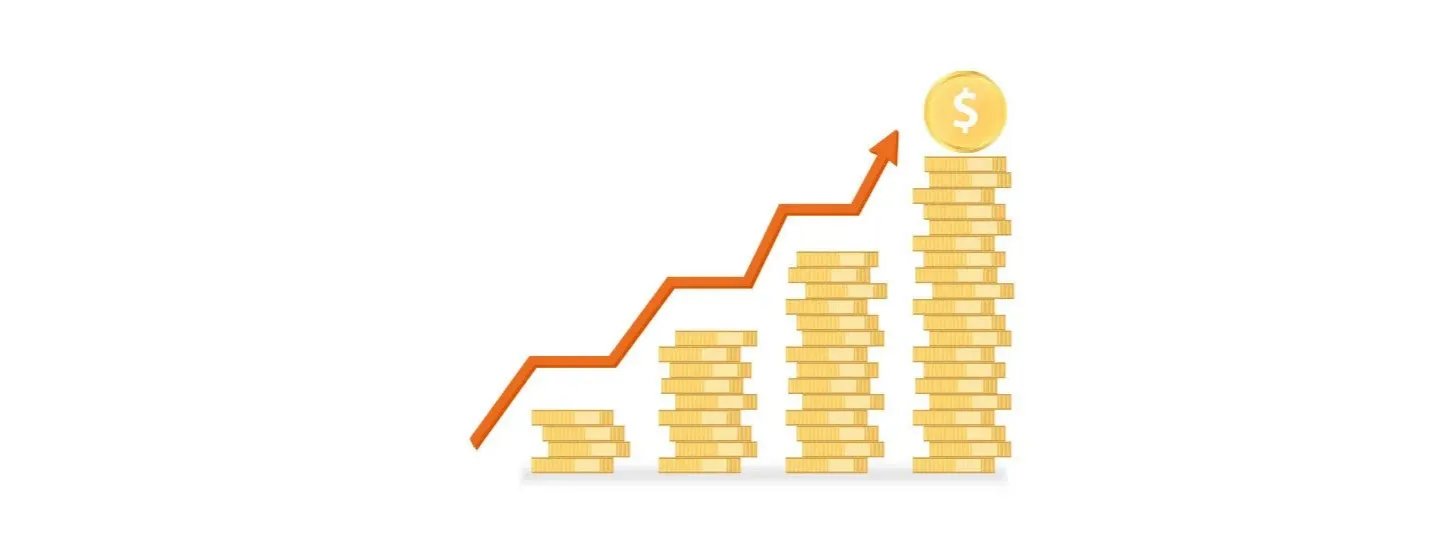Understanding The Indian Money Market 2022

Understanding The Indian Money Market
Meaning of Money Market:
A money market is a place where you can buy and sell short-term funds. A period of 364 days or fewer is considered short-term. To put it another way, the loan and payback are completed in 364 days or less. Manufacturers require two forms of financing: daily expenses such as purchasing raw materials, paying workers, paying excise duty, paying electricity bills, and capital expenditures such as purchasing machinery, installing pollution control equipment, etc.
The first type of financing is used to invest in the manufacturing process for a limited time. The money market’ is the market where such short-term finance is borrowed and lent. Almost every concern in the financial system, whether it is a financial institution, a business enterprise, a corporation, or a government agency, faces recurring liquidity management issues because expenditures and income rarely coincide.
The money market’s most crucial purpose is to fill this liquidity void. As a result, business and finance enterprises can buy (or sell) the shortage (or surplus) of funds in the money market to bridge the gap between cash revenues and cash expenditures.
In simple terms, a money market is a place where you can borrow and lend money for a short period of time. While the money market aids in transferring large sums of money between banks, it also provides a mechanism for cash-rich businesses and other institutions’ surplus funds to be utilised (at a fee) by banks, corporations, and other institutions in need of short-term funding.
Anyone having a temporary excess of funds can be a provider of funds to the money market. Government bonds, corporate bonds, and bank bonds are examples of money market securities, which have a ready market, similar to the equity shares of a publicly-traded firm. Treasury bills, certificates of deposits, commercial paper, and other short-term assets (one year or less in original maturity) are traded in the money markets. The characteristic of money market instruments is that they are more liquid.
Money and highly liquid marketable securities are purchased and sold in the money market. It is not a location like a stock exchange but rather an activity where all trading is done over the phone. One of the most significant characteristics of the money market is a commitment to honour and creditworthiness.
The money market is an essential aspect of the financial system because it allows lenders’ surplus funds to balance with borrowers’ requirements for short periods of time ranging from overnight to a year. The money market offers a non-inflationary means of financing government deficits and the ability for governments to implement monetary policy through open market operations and a market-based reference point for determining interest rates.

Features of Money Market:
Following are the features of the money market:
1. Unlike a stock exchange, the money market has no geographical restrictions. Financial institutions that deal in monetary assets can be found all over the world.
2. Despite several money market centres like Mumbai, Calcutta, Chennai, and others, they are not separate autonomous markets but are linked and interconnected.
3. It refers to any transactions involving money or monetary assets.
4. It’s solely a market for short-term funds.
5. There is no single homogeneous market. There are several sub-markets, such as the Call money market and the Bill market.
6. The money market serves as a conduit between the RBI and banks and a source of monetary policy and management information.
7. Transactions can be carried out without the assistance of a broker.
8. The money market trades a wide range of instruments.
Objectives of Money Market:
The following are the objectives of the money market:
1. To meet the short-term funding needs of borrowers and to offer liquidity to the lenders of these funds.
2. To provide a parking spot for the temporary use of extra funds.
3. To provide a means of overcoming temporary disadvantages.
4. To allow the central bank to influence and govern the economy’s liquidity. To assist the government in using open market operations to implement its monetary policies.

Structure of Indian Money Market:
(i) India’s money market is divided into two sectors: (a) organised and (b) unorganised.
(ii) The Reserve Bank of India, the State Bank of India with its seven associates, twenty nationalised commercial banks, other scheduled and non-scheduled commercial banks, foreign banks, and Regional Rural Banks make up the organised sector. The RBI’s portion is systematically coordinated, so it’s called organised.
(iii) Non-bank financial institutions like the LIC, GIC and subsidiaries, and the UTI also operate in this market, but only through banks, rather than directly.
(iv) Banks also make quasi-government agencies and large corporations’ short-term surplus money available to the organised market.
(v) In the Indian money market, cooperative credit institutions link the organised and unorganised segments. The structure of these institutions is three-tiered. State cooperative banks are at the top of the food chain. Primary credit organisations and urban cooperative banks operate on a local basis. Only state and cooperative central banks should be included in the organised sector due to their size, methods of operation, and dealings with the RBI and commercial banks. Local cooperative societies are only tangentially related to it.
(vi) Indigenous banks and money lenders make up the unorganised sector. It is disorganised because the RBI does not consistently coordinate the actions of its constituent parts.
(vii) Money lenders are found all around the country, but there is no connection between them.
(viii) Indigenous banks are better organised since they have access to rediscount facilities from commercial banks, which have relations to the Reserve Bank of India. However, this type of organisation only has a shaky relationship with the RBI.
Constituents of the Indian Money Market:
Constituents of the Indian Money Market: As a result, the key players in the money market are the lenders who provide short-term credit and the borrowers who need it.
I. Supply of Funds:
In the Indian money market, there are two main sources of short-term funds supply:
(a) the unorganised indigenous sector and
(b) the organised modern sector.
(i) Unorganised Sector:
Numerous indigenous bankers and rural money lenders make up the unorganised sector. It is unorganised because its activities are not controlled and coordinated by the Reserve Bank of India.
(ii) Organized Sector:
The organised modern sector of the Indian money market comprises:
(a) The Reserve Bank of India (RBI);
(b) The State Bank of India and its associate banks;
(c) The Indian joint-stock commercial banks of which 20 scheduled banks have been nationalised;
(d) The exchange banks which mainly finance Indian foreign trade;
(e) Cooperative banks;
(f) Other special institutions, like Industrial Development Bank of India, State Finance Corporations, National Bank for Agriculture and Rural Development, etc., which operate in the money market indirectly through banks; and
(g) Quasi-government bodies and large companies also make their funds available to the money market through banks.
II. Demand for Funds:
In the Indian money market, the primary borrowers of short-term funds are: (a) Central Government, (b) State Governments, (c) Local bodies, such as municipalities, village panchayats, etc., (d) traders, industrialists, farmers, exporters and importers, and (e) general public.

Sub-Markets of Organised Money Market:
The organised sector of the Indian money market can be further classified into the following submarkets:
A. Call Money Market:
The call money market is the most crucial part of the organised money market. It specialises in one-day call loans or call money. The call money market is often known as the interbank call money market because most players are banks.
The demand side of the call money market consists of banks with a temporary cash shortage, while the supply side is made up of banks with a temporary fund surplus.
The following are the main characteristics of the Indian call money market:
(i) The call money market is an institutional mechanism that allows some banks to make their surplus available to other banks that are temporarily short of funds.
(ii) The call money market is mainly dominated by banks. The State Bank of India has always been on the side of lenders.
(iii) The call money market is run by brokers who maintain constant contact with banks and serve as a conduit between the borrowing and lending banks.
(iv) The call money market is highly volatile and competitive. As a result, it serves as the most accurate indication of the organised money market’s liquidity status.
(v) The call money market’s interest rate is highly volatile. It immediately rises in response to increased demand for funds and quickly declines in response to increased supply of cash.
(vi) The call money market is critical in reducing day-to-day changes in individual banks’ reserve positions and boosting the country’s banking system’s overall performance.
B. Treasury Bill Market:
The Treasury Bill Market deals in T-Bill, which are the Government of India’s short-term (91, 182, and 364 days) liabilities. Theoretically, these bills are issued to address the government’s short-term financial needs.
They have, however, become a reliable source of cash for the government. A part of treasury bills is converted into long-term bonds each year. There are two types of Treasury bills: ad hoc and regular.
State governments, semi-government departments, and foreign central banks receive ad hoc treasury bills. They are not marketable and are not sold to banks or the general public.
Regular Treasury Bills are readily tradable and sold to banks and the general public. The Reserve Bank of India sells both ad hoc and regular treasury notes on behalf of the Central Government.
Compared to the treasury bill markets in the United States and the United Kingdom, India’s Treasury bill market is underdeveloped.
Treasury bills are the most important money market instrument in the United States and the United Kingdom:
(a) Treasury notes provide a risk-free, profitable, and highly liquid investment avenue for various financial institutions’ short-term surpluses;
(b) Treasury bills are a significant source of revenue for the government; and
(c) Treasury bills are a significant source of revenue for the government; and
The Indian Treasury bill market, on the other hand, has no dealers except the Reserve Bank of India. Commercial banks, state governments, and semi-government organisations hold some Treasury notes in addition to the Reserve Bank. However, due to the lack of a developed treasury bill market, these treasury bills are not popular among nonbank financial organisations, corporations, or people.
C. Commercial Bill Market:
The commercial bill market is concerned with commercial bills issued by businesses. These bills usually have a three-month maturity. A commercial bill is a pledge by the buyer of goods to pay the seller a certain sum within a given time frame. The bill is drawn by the vendor, who has sold his products on credit and sent to the buyer for acceptance. The bill becomes a marketable instrument and is sent to the seller after the buyer or his bank writes “accepted” on it.
The seller can now sell the bill to his bank for cash (i.e., get it discounted). The bank can sell the notes to other banks or get them rediscounted by the Reserved Bank during a financial crisis. Compared to developed countries like the United Kingdom, India’s bill market is underdeveloped. There are no specialised organisations, such as acceptance houses and discount houses, that deal specifically with acceptance and discounting.
D. Collateral Loan Market:
Collateral loans, or loans backed by security, are dealt with in the collateral loan market. Commercial banks issue short-term loans against government securities, shares, and debentures, among other things, in the Indian collateral lending market.
E. Certificate of Deposit and Commercial Paper Markets:
These markets deal with certificates of deposit and commercial papers. The Reserve Bank of India (RBI) launched these two instruments (CD and CP) in March 1989 to broaden the spectrum of money market instruments and provide investors more choice in deploying their short-term surplus cash.

Participants in Money Market:
The money market comprises a vast number of borrowers and lenders.
The following are some of the key players:
1. Central Government:
The Central Government borrows money in the money market by issuing Treasury Bills (T-bills). The RBI is in charge of issuing T-Bills. T-Bills are instruments that carry no risk. They are valid for 91 days (3 months), 182 days (6 months), and 364 days respectively (1 year). Banks, corporations, and other financial organisations buy T-Bills and lend them to the government as part of its short-term borrowing programme because they are risk-free.
2. Public Sector Undertakings:
Many government corporations have stock exchange listings. They can issue commercial paper to seek working capital finance because they are publicly traded firms. In the money market, the PSUs are solely borrowers. Due to the bureaucratic attitude, they rarely offer their surplus. PSU treasury operations are inefficient, with large cash surpluses sitting dormant for extended periods.
3. Insurance Companies:
General and life insurance companies are common lenders in the money market. They do not borrow in the money market because they have cash. They have been major investors after the advent of CBLOs (Collateralized Borrowing and Lending Obligations). In choosing between capital market and money market securities, insurance companies choose capital market instruments. Because their lending programmes are for such a long time, they play a smaller part in the money market.
4. Mutual Funds:
Mutual funds provide a wide range of investment options to meet the needs of the general public. Money Market Mutual Fund Schemes, also known as Liquid Schemes, are a type of mutual fund that invests in money markets. The investment goal of these plans is to invest in money market products.
They provide investors with the most liquidity by allowing withdrawals with a day’s notice or encashment of units using bank ATMs. Naturally, mutual funds only invest the money market portion of such schemes’ assets. Instead, they don’t take out loans; instead, they lend or invest in the money market.
5. Banks:
Scheduled commercial banks are major money market borrowers and lenders. They use the call money market, short-notice market, repo, and reverse repo markets to borrow and lend. They borrow from the RBI and IDBI in the rediscounting market. They lend in the commercial paper market by purchasing papers issued by corporations and publicly traded entities. They also borrow from corporations by issuing Certificates of Deposit.
6. Corporates:
Businesses borrow by issuing commercial papers, which are essentially short-term promissory notes. Listed firms issue them after getting the requisite credit rating for the CP. They also lend their temporary surplus in the CBLO market when the market’s interest rate is exceptionally high. When they buy the banks’ Certificates of Deposit, they act as lenders to the banks. They are also lenders through the purchase of Treasury bills.
Non-banking finance businesses, primary dealers, provident funds, and pension funds are only a few of the smaller participants. They primarily invest and borrow in the CBLO market in a reduced capability.

Defects of the Indian Money Market:
A well-developed money market is a necessary condition for effective monetary policy execution. The central bank regulates and controls the country’s money supply through the money market. Unfortunately, the Indian money market is underdeveloped, poorly organised, and plagued by several flaws.
Major defects are discussed below:
I. Dichotomy between Organised and Unorganised Sectors:
The Indian money market’s most significant flaw is its separation into two sectors: (a) the organised sector and (b) the unorganised sector. There is little communication, coordination, or cooperation between the two sectors. The Reserve Bank will find it challenging to ensure that its monetary policy is implemented consistently and effectively in both sectors.
II. Predominance of the Unorganised Sector:
The Indian money market’s predominance of the unorganised sector is another significant flaw. In rural areas, indigenous bankers hold a substantial position in the money-lending business. There is no obvious distinction between short-term and long-term loans, nor between the purposes of loans, in this unorganised industry.
These local bankers, who account for a significant percentage of the money market, remain unorganised. As a result, they severely limit the Reserve Bank’s ability to control the money market.
III. Wasteful Competition:
There is wasteful competition between the organised and unorganised sectors and between the members of the two. The relationship between diverse areas of the money market is not friendly; they are only loosely connected and tend to be separatist.
The State Bank of India and other commercial banks, for example, still regard each other as competitors. In the same way, there is competition between Indian commercial banks and overseas banks.
IV. Absence of All-India Money Market:
The Indian money market has not been integrated into a single pan-Indian market. It is separated into several portions that primarily serve the financial needs of the local community. For example, money markets in larger cities such as Bombay, Madras, and Calcutta have limited touch with those in smaller towns.
V. Inadequate Banking Facilities:
The Indian money market is insufficient to meet the economy’s financial needs. Despite the tremendous proliferation of bank branches in recent years, notably following bank nationalisation, huge rural areas remain without banking facilities. The banking institutions are insufficient compared to the country’s size and population.
VI. Shortage of Capital:
A lack of capital funds often hampers the Indian money market. The money market’s capital supply is insufficient to meet the country’s industrial and commercial needs. The main causes of capital shortages are: (a) people’s poor saving capacity; (b) insufficient banking facilities, particularly in rural areas; and (c) people’s undeveloped banking habits.
VII. Seasonal Shortage of Funds:
The cyclical stringency of loans and higher interest rates during certain times of the year are major drawbacks of the Indian money market. During the busy months of November to June, when there is an excess demand for credit to continue agricultural harvesting and marketing operations, such a shortage inevitably occurs. As a result, interest rates are expected to climb during this time. In contrast, during the slow season, which lasts from July to October, loan demand and interest rates plummet.
VIII. Diversity of Interest Rates:
Another flaw is the variety and variance of interest rates in the Indian money market. “The fact that a call rate of 3/4 per cent, a hundi rate of 3%, a bank rate of 4%, a bazar rate of small traders of 6.25 per cent, and a Calcutta bazaar rate for bills of small traders of 10% can exist simultaneously indicates an extraordinary sluggishness of the movement of credit between various markets,” wrote the Central Banking Enquiry Committee in 1931.
Different cities, such as Bombay and Calcutta, have different interest rates. Variations in interest rates are mostly attributable to credit immobility caused by insufficient, expensive, and time-consuming methods of money movement. Interest rate differentials have a negative impact on the money market’s smooth and effective operation.
IX. Absence of Bill Market:
The smooth and efficient operation of the money market requires the existence of a well-organised bill market. Unfortunately, India’s bill market is still underdeveloped despite the Reserve Bank of India’s best efforts.
In India, short-term bills account for a far smaller bank financing than in advanced countries.
The underdeveloped bill market in India is due to several factors:
(i) The majority of commercial transactions are conducted in cash.
(ii) Cash credit is the most common type of bank loan. Banks provide cash credit in exchange for commodity security. This form of credit has no bills attached to it.
(iii) The practice of sellers advancing loans limits the usage of bills;
(iv) There is a lack of uniformity in the drawing of statements in different sections of the country; and
(v) The use of exchange bills is discouraged by high stamp duty.
(vi) Another aspect contributing to India’s bill market’s underdevelopment is the lack of acceptance houses.
(vii) To assure higher liquidity and public confidence, Indian banks prefer to put their funds in first-class government securities rather than exchange bills.
(viii) The Reserve Bank of India chooses to provide commercial banks with rediscounting facilities against recognised securities.
edited and proofread by nikita sharma




